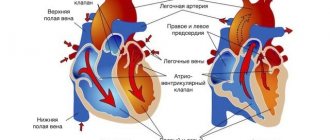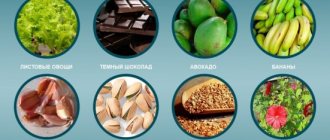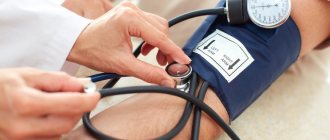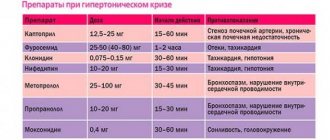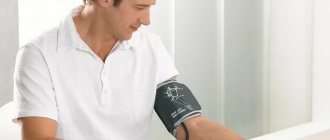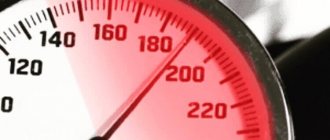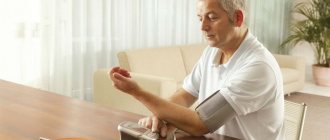Arterial hypertension is an extremely common pathology that affects more than 50% of men and women over 40 years of age. This disease is the leading cause of cardiovascular complications (myocardial infarction, stroke, coronary heart disease, chronic heart failure, chronic kidney disease) and causes 55% of total mortality.
There are herbal remedies to lower blood pressure. Many plants, due to targeted or complex effects on the body, help not only reduce blood pressure, but also normalize other disorders, in particular:
- improvement of lipid profile;
- reducing the severity of atherosclerotic lesions of large vessels;
- increasing glucose utilization;
- normalization of microcirculation and increased oxygenation of distant organs and tissues.
Who is at risk?
Hypertension is associated with many pathologies, external influences and internal changes in the body. It most often occurs in people with the following risk factors:
- Age over 65 years.
- Overweight or obesity.
- Low physical activity, sedentary lifestyle.
- Excessive consumption of alcoholic beverages, smoking.
- Abuse of coffee.
- High emotional stress, chronic stress and sleep disturbances.
- Failure to comply with work and rest schedules.
- Hereditary tendency to high blood pressure.
- Unbalanced diet, lack of fruits and vegetables in the diet, excessive consumption of table salt.
- Fluctuations in hormonal levels during pregnancy, taking hormonal contraceptives, early transition to menopause.
- Endocrine diseases: diabetes mellitus, hyperthyroidism, etc.
Hypertension and pregnancy
Pregnancy is also often accompanied by sudden jumps in blood pressure. However, existing hypertension can cause complications associated with bearing a child. Most often they occur in the second half of pregnancy and include:
- Late miscarriage.
- Premature birth.
- Preeclampsia and eclampsia.
- Intrauterine growth retardation.
In addition, high blood pressure increases the risk of postpartum hemorrhage, which is one of the most dangerous complications.
Therefore, pregnant women are advised to undergo clinical observation by a therapist with a frequency of examinations once a month during the first half of pregnancy and 2 times a month in the second, as well as appropriate antihypertensive therapy. Also, a regular examination by an ophthalmologist, fetal ultrasound, ECG and ECHO-CG should be carried out regularly.
Main symptoms of high blood pressure
With prehypertension and in the initial stages of hypertension, there are often no symptoms of increased blood pressure, and a person becomes aware of this problem during control measurements during preventive examinations or undergoing diagnostics for other pathologies.
If high blood pressure persists for a long time, high levels or poor tolerance of hypertension, the following symptoms may occur:
- Pressing or throbbing headache.
- Dizziness, pulsating tinnitus.
- Flashing "flies" before the eyes.
- Increased and rapid heartbeat.
- Redness of the facial skin and increased sweating.
- Anxiety, excessive irritability.
- Chronic fatigue, malaise.
- Swelling and numbness in the limbs.
Classification of traditional methods of treatment
Treatment of hypertension with folk remedies is considered quite safe compared to traditional ones, but here it is important to adhere to certain rules. And the main thing is timely diagnosis and timely treatment of the disease.
The most reliable method of identifying arterial hypertension is to undergo a comprehensive examination at a medical facility. There you will not only get a diagnosis, but also determine the causes of the disease, because often an increase in pressure is provoked by disorders of internal organs, for example, the liver or kidneys, as well as endocrine diseases. In this case, folk remedies for hypertension will relieve symptoms, but if treatment is stopped, the problem with blood pressure will invariably return.
Doctors recommend regular medical examinations to identify hypertension, since in almost half of patients at an early stage the disease is asymptomatic, showing pronounced signs already in a state of neglect.
If you do not have the opportunity to receive high-quality medical services, you can conduct diagnostics yourself at home. To do this, you need to purchase a pressure measuring device and use it 2-3 times a day for at least two weeks. The presence of hypertension can be judged only by recording deviations from the norm over a long period of time, because a one-time increase in pressure can be triggered by lack of sleep, overwork at work, or overeating during a feast.
What do the pressure measurements indicate:
- The upper value is 160-170, the lower 90-100. A periodic increase in pressure to this level indicates the initial stage of the disease.
- The upper one is up to 200 and the lower one is up to 110, this is how the second stage of hypertension manifests itself, accompanied by disturbances in vision and the functioning of the urinary system, nosebleeds, insomnia, as well as hypertensive crises (sudden surges in pressure) after physical activity.
- Blood pressure readings are 230/120 and above. This is already hypertension in the third stage, at which irreversible changes in the functioning of the circulatory system and internal organs begin.
Traditional medicine can easily normalize the condition of hypertension only at the first stage of the development of the disease. On the second, it is recommended to combine folk recipes for lowering blood pressure with gentle medications. At the last stage of hypertension, you can no longer do without medications, but you can use “grandmother’s” remedies as an auxiliary treatment.
Non-traditional ways to combat hypertension are divided into the following types:
- phytotherapy;
- relaxation methods, including breathing work, massages, baths, aromatherapy;
- diet and exercise.
Let's look at each of these methods of reducing pressure.
Lifestyle change
The most important tool in the fight against high blood pressure is lifestyle modification. This allows you to eliminate or minimize the influence of most risk factors, thereby stopping or slowing down the progression of hypertension and minimizing the risk of complications.
Basic tips for changing lifestyle for hypertension include: controlling body weight, nutrition, giving up bad habits and avoiding stress.
Control your body weight
Obesity is considered one of the key factors causing high blood pressure. It is believed that each additional kilogram of weight increases blood pressure by approximately 1 mmHg. In addition, this disease aggravates the general condition of the cardiovascular system and the entire body, making it more vulnerable to other pathologies.
Increase your physical activity
Regular exercise, even something as simple as walking, can be just as effective as medication for lowering blood pressure. Physical activity strengthens the heart, helping to normalize the functioning of the cardiovascular system. It can also help fight obesity.
A total of 150 minutes of moderate exercise per week or 75 minutes of intense exercise in most cases can reduce levels by 5-8 mmHg.
Important ! It is also useful to do neck exercises. Read more about Shishonin’s gymnastics for hypertensive patients in a separate article.
Limit your consumption of alcohol, coffee and tobacco
Alcoholic drinks can be both good and bad for your health. Drinking alcohol in moderation (up to 340 ml of beer, 150 ml of wine or 40 ml of strong alcohol) can potentially reduce blood pressure by approximately 4-5 mmHg. However, large volumes can greatly increase performance and in the long term lead to deterioration of health.
Studies have also shown that 1-2 cups of coffee increases blood pressure by 30-40 mmHg. for up to 3 hours due to narrowing of blood vessels and increased stress. Tobacco products have similar effects due to the substance nicotine they contain.
Limit your salt intake
It is believed that even a slight reduction in the amount of table salt in the diet can reduce blood pressure by about 5-6 mmHg. The most optimal amount is about 1.5 g of salt per day.
Make adjustments to your diet
A diet rich in whole grains, fruits, vegetables and low-fat dairy products, as well as limiting saturated fat and cholesterol, can reduce blood pressure by 10-11 mm Hg. for hypertension. This approach is called the DASH diet.
It is also worth paying more attention to potassium-containing products. Potassium helps eliminate sodium from the body, which leads to a decrease in blood pressure. Therefore, it is recommended to increase the consumption of such foods as:
- Leafy greens.
- Tomatoes and sweet potatoes.
- Avocados, bananas, oranges and apricots.
- Tuna and salmon.
- Nuts and legumes.
- Milk and fermented milk products: yoghurts, kefir.
Changing established eating habits is a complex, time-consuming process. Special applications for mobile phones or a paper diary can help with this. With their help, you can count the calories, proteins, fats and carbohydrates, micro- and macroelements eaten. Also pay attention to the labels of the products you buy.
A food diary helps you maintain a healthy lifestyle. Photo: VadimVasenin / Depositphotos
Normalize your work and rest schedule
Available scientific evidence suggests that working more than 40 hours per week increases the risk of developing hypertension by 17%. Also, a busy work schedule does not provide the opportunity to fully take care of your health - it leaves no opportunity for regular exercise, monitoring your diet, proper rest and sleep.
Avoid mental and emotional stress
Constantly being in a stressful state directly increases blood pressure and reduces the effectiveness of all other treatment and prevention methods. Take time to analyze all the factors and circumstances that create emotional stress: work, family, finances or illness. Determine the reasons, think about how to avoid stress or reduce its impact.
Meditate and use deep breathing techniques
The benefits of meditation and deep breathing techniques include reducing stress and anxiety, as well as activating the parasympathetic part of the autonomic nervous system. As a result, the heart rate decreases and blood pressure also drops, which is confirmed by relevant studies.
Monitor your blood pressure readings
If you have hypertension, your blood pressure should be measured regularly.
Photo by Thirdman: Pexels Blood pressure monitoring helps monitor the effectiveness of certain life changes, promptly identify and prevent potentially dangerous complications associated with increased blood pressure, such as hypertensive crises and strokes. Doctors recommend keeping a separate diary in which you record your blood pressure twice a day.
How to measure blood pressure using a mechanical tonometer
In order to measure pressure with a mechanical tonometer (video 1), you need:
- sit in a comfortable position and relax, while your arm should be bent at the elbow joint and lie on a flat surface,
- remove the shoulder part of the arm from clothing and fasten the cuff on it (its lower edge should be 3-4 cm above the elbow bend),
- place a stethoscope (phonendoscope) on the inside of the elbow joint in the place where the pulse can best be felt,
- using a hand pump, start pumping air into the cuff,
- bring the pressure gauge needle to values exceeding the expected pressure by 30-40 mm. rt. Art. (for example, if the patient’s normal blood pressure is 135/90, then you can stop at 170),
- slowly release air from the cuff, waiting for tones to appear - these are the sounds of a heartbeat; their appearance marks the boundary of systolic pressure, and their disappearance marks the boundary of diastolic pressure. Simply put, if tones appeared at number 150 and disappeared at number 100, then the result is 150/100).
Video 1. How to correctly measure pressure with a mechanical tonometer.
An automatic blood pressure monitor is easier to use (you don’t need to listen to your heart rate yourself), but it is less accurate. Such devices operate on batteries or from the mains.
Do not neglect follow-up visits to the doctor
Regular follow-up visits to the doctor with laboratory tests are one of the important methods of preventing dangerous complications. You should take a diary with your blood pressure readings with you.
During such consultations, the doctor monitors the effectiveness of the treatment and, if necessary, makes adjustments to the existing treatment regimen.
Folk remedies for hypertension, the most effective
Hypertension can be treated not only with medications, but also with traditional medicine; they have both a therapeutic and preventive effect. Let's consider the most effective traditional methods of treating hypertension.
Tea
Herbal infusions cope well with high blood pressure; individually, herbs will not have the desired effect, but in combination, there will be a wonderful effect:
- mint + fennel + valerian root + chamomile;
- valerian root + oregano + St. John's wort herb;
- calendula flowers + linden flowers + peppermint;
- hawthorn flowers + hawthorn fruits + elderberry flowers;
- dill seeds + motherwort grass + chamomile.
All components for each option must be mixed in equal quantities. To prepare tea, place 2 tablespoons of a mixture of herbs in a thermos and pour 0.5 liters of boiling water and leave overnight.
If at the same time a person takes medications to lower blood pressure, then the daily dose is 250 milliliters, of which 125 ml should be drunk in the morning on an empty stomach, the next 125 ml an hour before bedtime. If you do not take additional funds, then you should drink 250 ml of tea according to the same scheme. The course is individual, 2-4 weeks.
- The best recipes for treating arthritis with folk remedies at home
Honey
You need to prepare the following composition:
- 500 milliliters of honey;
- 3 kilograms of onions;
- 25 pieces of walnut partitions;
- 500 milliliters of vodka.
Grind the partitions from the nuts in a mortar or using a blender, peel the onion, wash it, pass it through a meat grinder or grate it and squeeze the juice out of the mixture (this is what you will need). Onion juice with partition powder, combine with honey and pour in vodka, mix well until smooth.
Leave for 10 days, under a closed lid in a dark place, shaking once every 2 days. Take 1 tablespoon no more than three times a day, after meals. The prepared mixture is enough for one course of treatment, with normal tolerance.
Garlic
Several remedies can be prepared from garlic to lower blood pressure; each option must be used with caution, because the wrong dose or individual intolerance to garlic can, on the contrary, increase blood pressure or cause allergic reactions.
Recipe No. 1
Grind 1-2 medium garlic cloves to a puree and combine with a glass of kefir, shake well and drink the resulting mixture in one gulp. Use the method no more than 2 times a week.
Recipe No. 2
- Osteoarthritis of the hip joint: treatment at home with folk remedies
Place 25 cloves of garlic in half a liter of vodka and leave for 14 days in a dark, cool place without shaking. Take 5 ml half an hour before breakfast, lunch, dinner. Course 14-28 days.
Recipe No. 3
Pour 1 large peeled head of garlic into 500 milliliters of boiling water, leave for 7 days, use the product as a lotion on the forehead, feet, palms at the time when blood pressure surges begin.
Recipe No. 4
Boil a small, peeled head of garlic in a glass of milk until softened, strain. Take a tablespoon 3 times a day after meals – 2 weeks. Prepare fresh decoction every 2 days.
Recipe No. 5
Finely chop 1 large onion, mix with 4 cloves of grated garlic, and one spoon of crushed rowan fruits, pour the resulting mixture into 1 liter of boiled, cooled water, and after boiling, simmer for another 15 minutes. Then add a tablespoon of chopped dill and parsley, boil for another 10 minutes, leave for 1-1.5 hours, strain. Take 2 tablespoons 4 times a day, half an hour before meals. The course is 10 days, after which you need to take a three-week break, then the course can be repeated again.
Compresses and baths
Recipe No. 1
Combine apple cider vinegar with water 1:1, dip 2 pieces of fabric or towels into the solution and wrap them around your feet for 15-20 minutes. The method is used only in case of a sharp rise in pressure, or hypertension of 2-3 degrees.
- How to treat arthrosis of the shoulder joint at home with folk remedies
Recipe No. 2
Useful for high blood pressure, contrast baths. For 20 minutes, immerse your feet in either cold or hot water, finishing the procedure with cold water. An effective method, but with pressure above 160/110, it will be ineffective.
Recipe No. 3
Dissolve 50 grams of dry mustard powder in 5 liters of hot water and pour into a warm bath. Lie in such a bath for 10-15 minutes, then dress warmly and wrap yourself in a blanket, try to sleep.
Juices
Recipe No. 1
Squeeze juice from fresh, raw beets and take 30 ml, 3-4 times during the day. The course is 21 days, without a break.
Recipe No. 2
Freshly squeezed red grape juice should be drunk according to the following scheme:
- Days 1-3 – 2 tablespoons in the morning and before bed;
- 4-6 days – 50 ml, twice a day;
- Days 7-9 – 150 ml twice;
- 10-11 days 200 ml twice;
- Days 12-13 – 250 ml during the day.
Starting from the fourteenth day, drink grape juice in the reverse order, where the last dose will be 2 tablespoons.
Recipe No. 3
Boil pomegranate peel in 400 milliliters of water and drink 200 ml instead of tea several times a day.
Fruit
Recipe No. 1
Pour 2 tablespoons of dried currants into a glass of boiling water, simmer for 10 minutes over low heat, let sit for one hour, strain. Take 50-60 ml 4 times a day, regardless of meals.
Recipe No. 2
Add a tablespoon of dry rose hips to 500 milliliters of boiling water, boil for about 5 minutes, leave under a closed lid for half an hour, strain, add a spoonful of liquid honey to the warm broth, divide the resulting volume into 2 doses during the day.
Recipe No. 3
Grind 400 grams of fresh or thawed cranberries with a tablespoon of sugar and take after meals, a dessert spoon 3 times a day, or add jam to tea instead of sugar.
Recipe No. 4
Mix 2 tablespoons of hawthorn fruit with a pinch of dried mint, add the mixture to 0.5 liters of boiling water and simmer for 15 minutes, leave to infuse for 1.5 hours under a closed lid or in a thermos, strain, add sugar or honey as desired.
Drink 100 ml 2-3 times a day. Any decoction of the fruit can be drunk for a long time, 3-6 months, with normal tolerance and a visible positive effect. Then, you need to take a break for 1-1.5 months, and the course can be repeated.
What is possible for hypertension and what is not?
High blood pressure imposes certain restrictions on human life. In order to avoid deterioration of the condition and the development of complications, it is important to understand what exactly needs to be abandoned.
Foods that can increase blood pressure
If you have high blood pressure, you should avoid or minimize the consumption of foods that contain large amounts of table salt (Fig. 1), namely:
- Processed foods such as smoked meats, sausage, bacon and ham.
- Canned goods, broths, dried soup mixtures.
- Condiments: ketchup, soy sauce, salad dressings.
- Frozen mixtures of potatoes, rice and semi-finished products.
- Snacks: popcorn, peanuts, chips.
- Marinated and brined products. In this case, it is recommended to use marinades based on vinegar and lemon juice as an alternative.
Figure 1. High-salt foods that are harmful to patients with hypertension.
Source: heart.org It is also recommended to completely eliminate foods that contain saturated fats and trans fats from your diet.
Trans fats are man-made fats that are a byproduct of the hydrogenation of unsaturated fats. They increase the level of “bad” cholesterol (low-density lipoprotein, LDL) and reduce the level of “good” cholesterol (high-density lipoprotein, HDL), which leads to atherosclerotic disease and the progression of hypertension. Saturated fats also increase LDL levels in the blood.
The main sources of trans fats are:
- Margarine.
- Sweets made with margarine: a variety of cakes and muffins.
- Fast food and deep-fried foods, such as French fries.
- Chips, crackers.
Saturated fats are mainly found in animal products, such as:
- Full fat milk and cream.
- Butter.
- “Red” meats: horse meat, beef, lamb, pork.
- Chicken skin.
Sports activities
Exercise promotes overall health, helps maintain a healthy body weight and normalize blood pressure in the long term. However, the loads should be moderate, since directly during exercise, blood pressure rises the more, the more active the workout.
The preferred activities for hypertension are cardio or aerobic exercise, which includes:
- Walking and jogging.
- Jumping rope.
- Riding a bicycle or exercise bike.
- Skiing and ice skating.
- Rowing.
- High or low impact aerobics,
- Swimming and water aerobics.
Air travel
Air flights are inevitably associated with surges in blood pressure. In this regard, before traveling, it is recommended to seek advice from your doctor. A specialist will help you assess the risks and properly prepare for the flight or justify the need to choose another type of transport.
In most cases, the following categories of people should avoid air travel:
- Persons with blood pressure readings more than 150/100 mmHg, even while taking medication.
- People with severe fear of flying and a tendency to panic attacks.
- Patients with concomitant cardiovascular pathologies, such as heart failure, thrombophlebitis, varicose veins, recent myocardial infarction or transient ischemic attack.
Visiting the sauna and bathhouse
Baths and saunas can also increase blood pressure, so you should be especially careful when visiting them. Direct contraindications are similar to those for air travel.
At the same time, there are studies that have shown the positive effect of the sauna on the human body with hypertension in the long term. Therefore, in the absence of contraindications, such procedures are permitted, but with a number of conditions:
- Use the sauna or bathhouse for a short time - 10 to 15 minutes per session.
- Avoid very high temperatures.
- Avoid rapid movements between very cold and hot environments, such as jumping from a sauna into snow or cold water.
- Do not visit the sauna or bathhouse alone. At the same time, companions should know what needs to be done if the condition of a person with hypertension worsens.
Nutritional supplements
Biologically active food supplements (BAS) can improve the general condition and course of hypertension. They should be used after consultation with a doctor (Fig. 2).
Figure 2. Some dietary supplements used in the treatment of hypertension. Source: MedPortal, wikipedia. org
Supplements that contain the following active substances are popular:
- Coenzyme-Q10. Strengthens the myocardium and improves its function, thereby stabilizing blood pressure.
- Vanadium. Capable of lowering blood pressure.
- Beta glucan. Reduces blood cholesterol levels, preventing atherosclerotic vascular damage and the development of hypertension.
- Lipoic acid. Directly reduces blood pressure in people with hypertension. Contraindicated for pregnant and nursing mothers.
- Vitamin C. Reduces blood pressure in people with hypertension, and in the long term strengthens the vascular wall, which also has a positive effect on the functioning of the cardiovascular system.
What to do in case of a hypertensive crisis?
Hypertensive crisis is a complication of arterial hypertension in which systolic pressure exceeds 180 mmHg.
Art. and/or diastolic – 120 mm Hg. Art. Accompanied by a sharp deterioration of all existing symptoms of hypertension, as well as shortness of breath, nausea and vomiting. When a hypertensive crisis develops, the following sequence of actions is recommended:
- Sit or lay the person down, providing access to fresh air, unbuttoning clothes on the chest and opening the windows in the room.
- Completely eliminate any sudden movements: bending, squatting, etc.
- Measure blood pressure. When receiving values of 160-180/110-120 mmHg. You should take the drug previously recommended by your doctor to lower your blood pressure.
- 40-60 minutes after taking the medicine, blood pressure should be measured again. If the readings have not decreased by 20-30 mm Hg. from the initial values or decreased too much (by 70-100 mm Hg) and/or the condition has not improved, you should immediately seek medical help.
- If the condition improves and blood pressure is adequately reduced, the person is recommended to rest in a supine position with the head of the bed raised and have a scheduled consultation with the attending cardiologist or family doctor.
If there are no recommendations and/or systolic blood pressure exceeds 200 mmHg, you must immediately call an emergency medical team.
Symptoms of hypertension
According to the symptoms, hypertension is difficult to confuse with other diseases, although the state of health is a little similar to high fever, but in the case of hypertension, the general state of health resembles severe depression, poor health for a long time.
Symptoms of hypertension:
- increased intraocular pressure, in which the patient experiences pain when blinking, moving the eyes in different directions;
- swelling on the face, arms, legs;
- feeling of weakness, fatigue.
